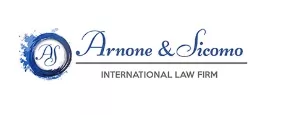Yacht refitting in Italy: do you have a non-EU vessel? Is it worth renovating and carrying out maintenance in Italy?
Yacht Refitting in Italy: What is a Yacht Refit?
In shipyards and among those involved in the world of boats, the term "yacht refitting" is often heard. But what does it actually mean? In essence, refitting represents the process of reviewing and repairing vessels; more precisely, it involves the repair, fixing, restoration, renewal, and restructuring of hulls. The literal translation is "reassembly."
Yacht refitting occurs in various cases:
Replacing old equipment with new.
Making modifications for yacht participation in sports competitions.
Customizing a yacht based on direct requests.
Installing modern components.
Restoring the preservation of a wooden boat.
The winter is the most suitable time for refitting to fully enjoy the boat in the summer.
The cost of a refit is significant, so it's crucial to prioritize and plan the work carefully.
A recent circular from the Customs and Monopolies Agency has significantly simplified the matter of nautical refit, especially regarding maintenance and refit works on non-EU pleasure yachts carried out in Italy.
The circular outlines tax simplifications for maintenance work conducted under the temporary admission regime, stating:
Exemption from sureties and VAT imposition.
Up to 100% reduction in customs guarantees for authorized AEO shipyards.
AEO status for active improvement works.
In essence, the circular aims to provide concrete simplification and reduce administrative burdens that previously weighed heavily on shipyards.
Yacht Refitting in Italy: Yacht Repairs Without Paying VAT
Circular No. 20 of May 27, 2022, from the Customs and Monopolies Agency, has outlined clear guidelines on customs procedures and fiscal obligations for the introduction of non-EU pleasure boats into the Union's customs territory for maintenance and refitting works.
The circular establishes that the 18-month limit for the temporary admission of non-EU yachts must be considered as a whole. It clarifies that, during temporary admission, maintenance works such as hull maintenance, repair, and replacement of the unit's systems and apparatus, and interior maintenance and repair can be performed, as long as the yacht's structure remains unchanged.
These works, under temporary admission and thus non-VAT imposability, do not trigger any customs warranty obligation. Conditions include:
- the yacht owner of the yacht demonstrates the moment of entry of the yacht into European waters, by presenting the "verbal declaration of temporary importation", to be presented to the competent customs office also subsequently, when it is deemed necessary to carry out maintenance following entry, and in any case before the start of the works;
⁃ The rights and obligations deriving from the temporary admission regime are transferred to the construction site in charge of the works, through presentation of the T.O.R.O. form. (transfer of rights and obligations);
⁃ The shipyard records in its accounting records the information relating to the works, parts and pieces replaced, assuming direct responsibility for the possible incurrence of the customs debt.
The circular further clarifies that when structural changes are needed for non-EU yachts, requiring substantial improvements, the active improvement regime must be used. This regime requires customs authorization, and the shipyard must provide a guarantee covering any due customs duties.
Yacht Refitting in Italy: Temporary Admission and Active Improvement Regime
Unlike the active improvement regime, the temporary admission regime allows the temporary importation of non-EU goods in total or partial exemption from customs duties (duty and VAT) without applying commercial policy measures.
Goods under temporary admission must be re-exported without modification, except for depreciation due to use. If choosing not to re-export and opting for nationalization, applicable duties, taxes, and import VAT, along with compensatory interest from the temporary admission binding date, must be paid.
The purpose of the temporary admission regime is to facilitate international trade and the circulation of goods.
In contrast, active improvement allows the importation of raw materials under suspension from paying duties and VAT without applying commercial policy measures. Once worked on, the product is destined for re-export or consumption within the European Union.
Active improvement allows repairs, assembly, transformation, and usual manipulations. To use the active improvement regime, authorization must be requested from the customs office where the applicant's accounting for customs purposes is kept and where at least part of the regime-related activities is carried out.
The goal of active improvement is to increase transformation within the European Union, promoting the development of EU companies through specialization, enhancing European companies, and increasing employment.
Yacht Refitting in Italy: Need Assistance?
The Arnone&Sicomo law firm has a maritime and navigation law department.
We assist clients in the purchase and sale procedures of boats, even located in non-EU countries. We handle the importation of non-EU flagged boats into Italy and the related tax regimes applicable in each case presented to us.
The content of this article is intended to provide a general guide to the subject matter. Specialist advice should be sought about your specific circumstances.

